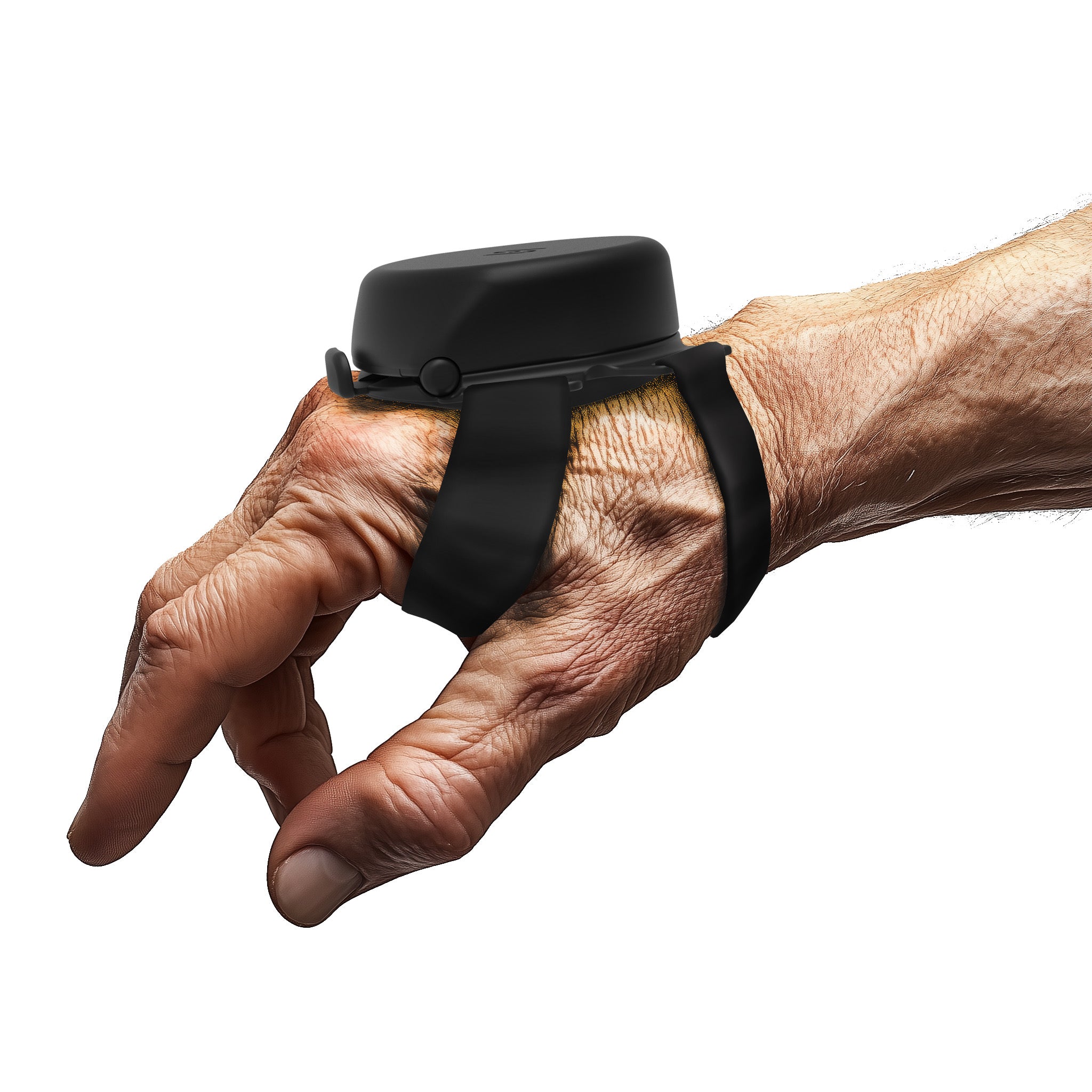Living with Essential Tremor (ET) can be challenging, as everyday tasks that others may take for granted often require extra effort. Adding to this, individuals with ET may feel self-conscious or misunderstood, making it clear that managing this condition extends beyond physical difficulties. Simple actions like eating or drinking in public can be uncomfortable, so raising awareness and fostering understanding are important steps toward supporting those who experience this condition.
In this informative article, we will discuss what Essential Tremor (ET) is, review some helpful coping strategies, explore both conventional and alternative treatments, dietary changes to help manage symptoms, and specific practical aids designed to make everyday tasks easier. Whether it is you or a loved one who has been experiencing this, the first step toward better management and an improved quality of life involves comprehending your condition. So let's begin to unpack the basics about Essential Tremor (ET) and move on to empowerment through practical and supportive solutions.
Understanding Essential Tremor
What is Essential Tremor?
Essential Tremor (ET), one of the most common movement disorders, is an involuntary shaking that affects the hands, head, and voice. Many people assume it must be Parkinson’s Disease (PD), but the two conditions are entirely different. Essential Tremor (ET) primarily involves movement-related tremors, such as action tremor, rather than the rest tremors typically associated with Parkinson’s Disease (PD). It comes in all degrees to some, mild shaking can be an annoyance, while for other people, this can be a disabling disease.
The Causes of Essential Tremor
-
Genetic Factors:
Essential Tremor (ET) is quite common among families, indicating thereby a strong genetic component. When it occurs in several family members across successive generations, this would point to a hereditary transmission through genes.
-
Age of Onset:
Although Essential Tremor (ET) can start at any age, it most often begins in middle age or later, suggesting that processes of aging may influence its development.
-
Unknown Causes:
Despite familial links and age associations, the biological causes of Essential Tremor (ET) are not known. Studies continue to investigate possible neurological or environmental triggers.
Diagnosis of Essential Tremor
Clinical evaluation remains the cornerstone in the diagnosis of Essential Tremor (ET), basically entailing a thorough history and neurological examination by a physician. No specific tests are designed for the diagnosis of Essential Tremor (ET), though healthcare providers may conduct a number of tests to rule out diseases other than the one being investigated, such as thyroid disease or certain medicine reactions, that could also produce similar symptoms. This ensures correct categorization of the nature of the tremor for better management.
Managing Essential Tremor
Medications and Treatments
Medications are often vital in managing Essential Tremor (ET), especially for those significantly impacted by the condition. However, it’s important to consult with a healthcare provider before starting or changing any treatment to ensure the approach is safe and tailored to your specific needs. These medications include:
-
Propranolol:
This beta-blocker is frequently prescribed to reduce mild to moderate tremors by decreasing the heart rate and reducing handshaking.
-
Primidone:
An anti-seizure medication that is effective in reducing tremors, is often used when beta-blockers are not suitable or effective.
-
Topiramate and Gabapentin:
Other medications that might be considered for patients who do not respond well to first-line treatments.
-
Focused Ultrasound:
It is a non-invasive therapeutic option targeting brain tissue to reduce the severity of tremor.
Natural Remedies and Therapies
Besides traditional medicines, many try various natural treatments and therapies:
-
Herbal Supplements:
Some people find supplements such as valerian root and lemon balm helpful due to their calming effects.
-
Acupuncture:
According to traditional Chinese medicine, acupuncture may help improve symptoms by restoring balance within the body.
-
Occupational Therapy:
Customized therapy can help individuals develop strategies to cope with daily tasks affected by tremors.
Daily Living and Practical Aids
Tools and Technology
Accommodating life with tremor includes the use of Essential Tremor aids and tools, such as:
-
Tremor-Canceling Devices:
Newer technologies include active gloves and wristbands that actively counteract the tremors.
-
Speech Recognition Software:
Assists those with vocal tremors in communicating more effectively.
-
Electronic Stabilizing Devices:
Such as camera stabilizers, adapted for personal use to aid in activities requiring fine motor control.
Home Modifications
-
Simple modifications at home can greatly enhance living with Essential Tremor (ET).
-
Touchless faucets and toilets: lessen the demand for fine motor control in turning handles.
-
Slip-resistant flooring: lowers the risk of falls for those whose tremor may cause them to lose their balance.
-
Automated Home Systems: voice-controlled systems make daily living easier with lights, temperature, and locks.
Diet and Nutrition

Foods to Avoid
Certain foods and substances worsen the tremors and are best minimized:
-
Preservatives and Artificial Sweeteners: These may further increase the severity of a person's tremor.
-
Excessive Sugar: High sugar levels can destabilize insulin levels and could potentially make the tremors worse.
The Essential Tremor Diet
A diet tailored for neurological health may be helpful including:
-
Magnesium-rich foods: Those such as spinach, nuts, and seeds, can help in maintaining good nerve function.
-
Complex Carbohydrates: Whole grains and legumes are also important inclusions in the diet, as they help to maintain blood sugar levels stable and, therefore, the tremors.
-
Hydration: Adequate fluid intake is important, as dehydration can exacerbate a tremor.
By incorporating a combination of strategies—medications, natural therapies, practical aids, and dietary adjustments—individuals with Essential Tremor (ET) can better manage their symptoms and enjoy an improved quality of life.
Safety Issues for Individuals with Essential Tremor
Safety is a primary concern for individuals with Essential Tremor (ET) while they are either at home or in public. There are certain precautions that can be taken to minimize risks and ensure safety. The following are some specific safety suggestions:
In the Home
-
Secure Loose Objects: Use non-slip mats under items on tables and secure heavy objects and appliances with brackets or velcro strips to avoid accidents.
-
Reorder Your Environment: Put daily essentials within reach to avoid stretching or bending, which could lead to falling.
-
Pad Sharp Corners: Pad sharp edges and corners of furniture to prevent bumps and bruises in case of falls, as the presence of tremors can increase this occurrence.
In the Kitchen
-
Automatic Shut-off Appliances: Consider placing automatic shut-off appliances in the kitchen in case they are left on.
-
Safety Switches: Place switches that are easy to reach to allow turning off appliances quickly in case of emergency.
A stove guard prevents pots and pans from falling off. That may be especially important to people with tremors in their hands.
Outside the Home
-
Use Public Transportation During Off-Peak Hours: This reduces stress and risk associated with crowds by traveling during less busy times.
-
Carry a Medical Alert Card: This card will be useful to describe your condition and immediate care in case of an accident that you cannot explain very well.
-
Wear Non-Slip Shoes: Wear shoes with good traction and support. Avoid walking on wet or oily floors, which increase the risk of falls.
How We Support Individuals with Essential Tremor?

At Steadiwear, we specialize in solutions such as the Steadi-3 glove, catering to those with Essential Tremor (ET) and Parkinson’s Disease (PD). This cutting-edge glove brings modern technology into place to help stabilize the movements of a person's hand and therefore give users better control and more assurance in performing day-to-day tasks. We adopt a product innovation and practical support approach so that each solution provided adds value to the lives of our customers.
This goes well beyond simply offering products. Through community engagement opportunities, online educational resources, webinars, and a wealth of informational content, individuals can become part of a supportive community. Within this environment, you can learn from both the experiences of others and the insights of experts, gaining the tools and knowledge to better manage this condition.
Conclusion
Living with Essential Tremor (ET) involves a holistic process: medical treatment, lifestyle adjustments, and practical aids. Empower yourself with knowledge and the right tools so that you can minimize the impact of your tremors on your life and preserve your independence. You can be sure that with the right support and strategies, it's possible to lead a vibrant and active life despite the frustrating roadblocks caused by Essential Tremor (ET). Let us embrace these tools and techniques in order to develop a life with fewer limitations and more possibilities.


